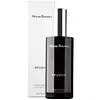What's inside
What's inside
 Key Ingredients
Key Ingredients

 Benefits
Benefits

 Concerns
Concerns

No concerns
 Ingredients Side-by-side
Ingredients Side-by-side

Rosa Damascena Flower Water
MaskingPropanediol
SolventGlycerin
HumectantPanthenol
Skin ConditioningNiacinamide
SmoothingMyrothamnus Flabellifolia Leaf/Stem Extract
HumectantWater
Skin ConditioningButylene Glycol
HumectantHydroxyacetophenone
AntioxidantCopper Tripeptide-1
Skin ConditioningBeta-Glucan
Skin ConditioningChrysanthellum Indicum Extract
Skin ConditioningEthylhexylglycerin
Skin ConditioningSodium Hyaluronate
HumectantAllantoin
Skin ConditioningXanthan Gum
EmulsifyingWater
Skin ConditioningHamamelis Virginiana Extract
AntiseborrhoeicSodium Chloride
MaskingButylene Glycol
HumectantHydrolyzed Lupine Protein
Skin ConditioningHelichrysum Stoechas Extract
TonicHydrolyzed Pea
Skin ConditioningHydrolyzed Millet
Skin ConditioningYeast Extract
Skin ConditioningCaprylic/Capric Triglyceride
MaskingPersea Gratissima Oil Unsaponifiables
Skin ConditioningPavlova Lutheri Extract
Skin ConditioningChlorella Sorokiniana Extract
Skin ConditioningGlycerin
HumectantMyrothamnus Flabellifolia Extract
HumectantFucus Vesiculosus Extract
EmollientAspalathus Linearis Extract
Skin ConditioningCyclopia Genistoides Leaf Extract
AntioxidantKigelia Africana Fruit Extract
Skin ConditioningEquisetum Arvense Extract
AstringentUbiquinone
AntioxidantAscorbyl Palmitate
AntioxidantHyaluronic Acid
HumectantSodium Hyaluronate
HumectantSalix Alba Extract
Skin ConditioningAlthaea Officinalis Callus Culture Extract
AntioxidantAnthemis Nobilis Flower Extract
MaskingCitrus Aurantium Flower Extract
PerfumingAllantoin
Skin ConditioningLactic Acid
BufferingSodium Citrate
BufferingTetrasodium Glutamate Diacetate
Myrtrimonium Bromide
PreservativeRosa Centifolia Flower Extract
AstringentSclerocarya Birrea Seed Oil
HumectantAloe Barbadensis Leaf
MaskingHelichrysum Orientale Flower
AntioxidantLuteolin
Skin ConditioningEthylhexylglycerin
Skin ConditioningPhenoxyethanol
PreservativeWater, Hamamelis Virginiana Extract, Sodium Chloride, Butylene Glycol, Hydrolyzed Lupine Protein, Helichrysum Stoechas Extract, Hydrolyzed Pea, Hydrolyzed Millet, Yeast Extract, Caprylic/Capric Triglyceride, Persea Gratissima Oil Unsaponifiables, Pavlova Lutheri Extract, Chlorella Sorokiniana Extract, Glycerin, Myrothamnus Flabellifolia Extract, Fucus Vesiculosus Extract, Aspalathus Linearis Extract, Cyclopia Genistoides Leaf Extract, Kigelia Africana Fruit Extract, Equisetum Arvense Extract, Ubiquinone, Ascorbyl Palmitate, Hyaluronic Acid, Sodium Hyaluronate, Salix Alba Extract, Althaea Officinalis Callus Culture Extract, Anthemis Nobilis Flower Extract, Citrus Aurantium Flower Extract, Allantoin, Lactic Acid, Sodium Citrate, Tetrasodium Glutamate Diacetate, Myrtrimonium Bromide, Rosa Centifolia Flower Extract, Sclerocarya Birrea Seed Oil, Aloe Barbadensis Leaf, Helichrysum Orientale Flower, Luteolin, Ethylhexylglycerin, Phenoxyethanol
 Reviews
Reviews

Alternatives
Ingredients Explained
These ingredients are found in both products.
Ingredients higher up in an ingredient list are typically present in a larger amount.
Allantoin is a soothing ingredient known for its protective and moisturizingg properties. Because of this, it is often added to products with strong active ingredients.
Studies show higher concentrations of this ingredient can promote wound healing.
Though it can be derived from the comfrey plant, allantoin is produced synthetically for cosmetic products to ensure purity.
Learn more about AllantoinButylene Glycol (or BG) is used within cosmetic products for a few different reasons:
Overall, Butylene Glycol is a safe and well-rounded ingredient that works well with other ingredients.
Though this ingredient works well with most skin types, some people with sensitive skin may experience a reaction such as allergic rashes, closed comedones, or itchiness.
Learn more about Butylene GlycolEthylhexylglycerin (we can't pronounce this either) is commonly used as a preservative and skin softener. It is derived from glyceryl.
You might see Ethylhexylglycerin often paired with other preservatives such as phenoxyethanol. Ethylhexylglycerin has been found to increase the effectiveness of these other preservatives.
Glycerin is already naturally found in your skin. It helps moisturize and protect your skin.
A study from 2016 found glycerin to be more effective as a humectant than AHAs and hyaluronic acid.
As a humectant, it helps the skin stay hydrated by pulling moisture to your skin. The low molecular weight of glycerin allows it to pull moisture into the deeper layers of your skin.
Hydrated skin improves your skin barrier; Your skin barrier helps protect against irritants and bacteria.
Glycerin has also been found to have antimicrobial and antiviral properties. Due to these properties, glycerin is often used in wound and burn treatments.
In cosmetics, glycerin is usually derived from plants such as soybean or palm. However, it can also be sourced from animals, such as tallow or animal fat.
This ingredient is organic, colorless, odorless, and non-toxic.
Glycerin is the name for this ingredient in American English. British English uses Glycerol/Glycerine.
Learn more about GlycerinSodium Hyaluronate is hyaluronic acid's salt form. It is commonly derived from the sodium salt of hyaluronic acid.
Like hyaluronic acid, it is great at holding water and acts as a humectant. This makes it a great skin hydrating ingredient.
Sodium Hyaluronate is naturally occurring in our bodies and is mostly found in eye fluid and joints.
These are some other common types of Hyaluronic Acid:
Learn more about Sodium HyaluronateWater. It's the most common cosmetic ingredient of all. You'll usually see it at the top of ingredient lists, meaning that it makes up the largest part of the product.
So why is it so popular? Water most often acts as a solvent - this means that it helps dissolve other ingredients into the formulation.
You'll also recognize water as that liquid we all need to stay alive. If you see this, drink a glass of water. Stay hydrated!
Learn more about Water